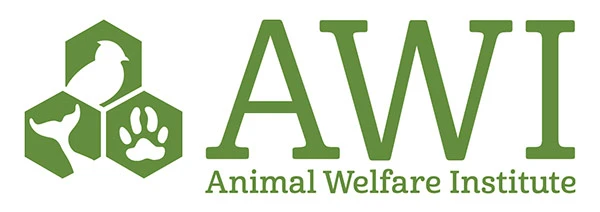
Sun Belt Real Estate Market Trends: Opportunities and Challenges
Introduction
The Sun Belt, a region stretching across the Southeast and Southwest United States, has been gaining increasing popularity, especially in recent years. This region, known for its warmer climate and growing economic opportunities, is attracting a diverse population, ranging from young professionals to retirees. The Sun Belt's rise in popularity is significantly impacting the real estate market, influencing migration patterns, and shaping investment opportunities. This blog post will explore the factors driving the Sun Belt's appeal, examine its effects on real estate markets, and compare its dynamics with states like Illinois. We will also delve into the investment opportunities this trend presents and discuss the potential challenges and considerations for real estate investors.
Migration Patterns and Real Estate Impact
The growing popularity of the Sun Belt states has significantly impacted migration patterns, leading to notable changes in the real estate markets of these regions.
Migration Trends from Colder Regions
A substantial number of Americans are relocating from colder, more northern states to the Sun Belt region. This migration is driven by several factors, including the desire for a warmer climate, lower cost of living, and better job opportunities.
The Sun Belt states have become especially attractive to retirees, who favor the region's mild winters and the plethora of recreational activities available. However, it's not just retirees; young professionals and families are also moving to these states, attracted by the growing job markets and vibrant cultural scenes.
Real Estate Market Dynamics
This influx of new residents has led to a significant rise in demand for housing in Sun Belt states. Cities like Atlanta, Austin, and Phoenix have seen their property values increase substantially, fueled by this growing demand.
The Sun Belt's real estate market contrasts with the national average, with areas like Florida, Texas, and Arizona showcasing strong growth in home sales and value appreciation, consistently outpacing other regions of the country.
Comparison with Illinois
When compared to states like Illinois, the Sun Belt states present a different real estate dynamic. Illinois, especially in cities like Chicago, has experienced its own real estate growth, but the Sun Belt's growth has been more robust in recent years.
Factors like the economic climate, job market prospects, and lifestyle preferences significantly influence these regional differences. Illinois, with its diverse economy and cultural offerings, appeals to a different demographic than the typically younger, cost-sensitive populations moving to the Sun Belt.
Investment Opportunities
The Sun Belt states offer a diverse range of real estate investment opportunities, driven by their growing populations, economic development, and unique geographic advantages.
Climate and Affordability as Key Attractors
The warm climate of the Sun Belt is a significant draw for both residents and investors. This factor, combined with generally more affordable living costs compared to some northern states, makes these areas particularly attractive for real estate investments.
The affordability factor is especially appealing in the current economic climate, where housing affordability is a nationwide concern. The Sun Belt offers relatively more affordable options, making it an attractive destination for first-time homebuyers and investors looking for high-value properties.
Economic Growth and Job Opportunities
Economic growth in the Sun Belt states, fueled by industries such as technology, healthcare, and finance, is creating robust job markets. This economic vitality is attracting a workforce that requires housing, thereby driving demand in both the residential and rental markets.
Cities like Austin and Phoenix have become tech hubs, drawing a younger demographic and boosting demand in both the housing and commercial real estate sectors.
Real Estate Diversity
The Sun Belt offers a diverse range of real estate investment opportunities, from urban apartments and single-family homes to commercial properties and retirement communities. This diversity allows investors to choose investments that align with their goals and risk tolerance.
The increasing number of retirees moving to the Sun Belt also presents opportunities in the senior housing market, a sector that is experiencing growing demand due to the aging population.
Comparing with Illinois
While Illinois, particularly Chicago, offers investment opportunities in a more traditional urban setting, the Sun Belt's appeal lies in its burgeoning growth, newer infrastructure, and different demographic trends.
Investors in Illinois might find opportunities in the Sun Belt's growth trajectory appealing, especially given the region's potential for higher long-term returns driven by consistent population growth and economic diversification.
Challenges and Considerations
As the Sun Belt states continue to attract attention in the real estate market, several challenges and considerations emerge that are crucial for successful real estate investments.
Market Saturation and Environmental Concerns
With the rapid influx of people and consequent real estate development, some areas in the Sun Belt may face the risk of market saturation. This can lead to a plateau in property values and potentially lower returns on investment.
Environmental concerns, such as the impact of development on natural habitats and resources, are increasingly coming to the forefront. Investors and developers need to consider sustainable development practices to mitigate environmental impacts.
Infrastructure Demands
The significant growth in the Sun Belt states also puts pressure on existing infrastructure. There is a need for expanded transportation networks, utilities, and public services to support the growing population.
This infrastructure development presents both a challenge and an opportunity. While it requires substantial investment and planning, it also opens up new areas for real estate development and growth.
Navigating Economic Fluctuations
While the Sun Belt states offer attractive real estate opportunities, investors must also be mindful of economic fluctuations. Interest rates, inflation, and the overall economic climate can affect property values and investment returns.
Creative financing solutions and a long-term investment perspective can help navigate these economic uncertainties.
Balancing Investment Risks
Diversification within real estate portfolios is key to mitigating risks associated with the Sun Belt market. This includes investing across different property types and geographic locations within the region.
Keeping abreast of local market trends and regulatory changes is also vital for informed decision-making and risk management.
Illinois vs. Sun Belt: A Comparative Perspective
Investors in Illinois, accustomed to a more stable but slower-growing market, may find the Sun Belt's dynamic environment both challenging and rewarding. Understanding the distinct market dynamics of the Sun Belt compared to Illinois is crucial for strategic investment planning.
The Sun Belt's growth trajectory offers potential for higher returns but also requires a keen understanding of its unique market drivers and challenges.
Conclusion
As we look ahead to 2024 and beyond, the Sun Belt states are poised to continue their trajectory as some of the most vibrant and rapidly growing regions in the U.S. real estate market. This growth is underpinned by a combination of favorable climate, economic opportunities, and a quality of life that continues to attract a diverse population.
Predictions for the Sun Belt's Real Estate Market
The Sun Belt is expected to maintain its appeal, with cities like Atlanta, Austin, Phoenix, and others remaining hotspots for real estate development and investment. These markets are likely to benefit from ongoing demographic shifts and economic growth.
The trend of remote work is anticipated to further fuel the growth in these regions, as more individuals seek living spaces that offer comfort and affordability away from traditional urban centers.
Implications for Investors in Illinois and Beyond
For investors in Illinois, the Sun Belt presents unique opportunities to diversify their portfolios and tap into a dynamic and growing market. However, it's crucial to approach these opportunities with a comprehensive understanding of the regional differences and specific market dynamics.
Balancing investment risks, considering environmental sustainability, and staying informed about local market trends will be key to navigating the Sun Belt's real estate landscape successfully.
Embracing a Changing Real Estate Environment
The Sun Belt's real estate market exemplifies the changing dynamics of the U.S. housing market, where geographic and economic shifts are creating new investment landscapes.
For both individual homeowners and institutional investors, adapting to these changes, while being mindful of the challenges, will be crucial for capitalizing on the opportunities presented by the Sun Belt states.
In summary, the Sun Belt's real estate market offers a blend of challenges and opportunities. Understanding these nuances will be vital for anyone looking to invest, develop, or live in this vibrant and evolving region.
WE OFFER OVER
25+
PROGRAMS
WE HAVE SERVED
12000+
STUDENTS
VETERAN STAFF
40+ Years
INDUSTRY EXPERIENCE
PROUDLY PROVIDING
23+ Years
OF EDUCATION
INLAND REAL ESTATE SCHOOL, INC. SUPPORTS

Campus Visiting Hours by appointment only:
1st-18th each month AM times, M-F
19th-end of the month PM times, M-F
Visiting hours need to be scheduled in advance
OAK BROOK, ILLINOIS 60523. © INLAND REAL ESTATE SCHOOL, INC. A PROFESSIONAL STUDIES INSTITUTE, INC. COMPANY, 2010. ALL RIGHTS RESERVED.
NOT AFFILIATED WITH THE INLAND REAL ESTATE GROUP OF COMPANIES, INC. THE INLAND NAME IS USED UNDER LICENSE. Privacy Policy







